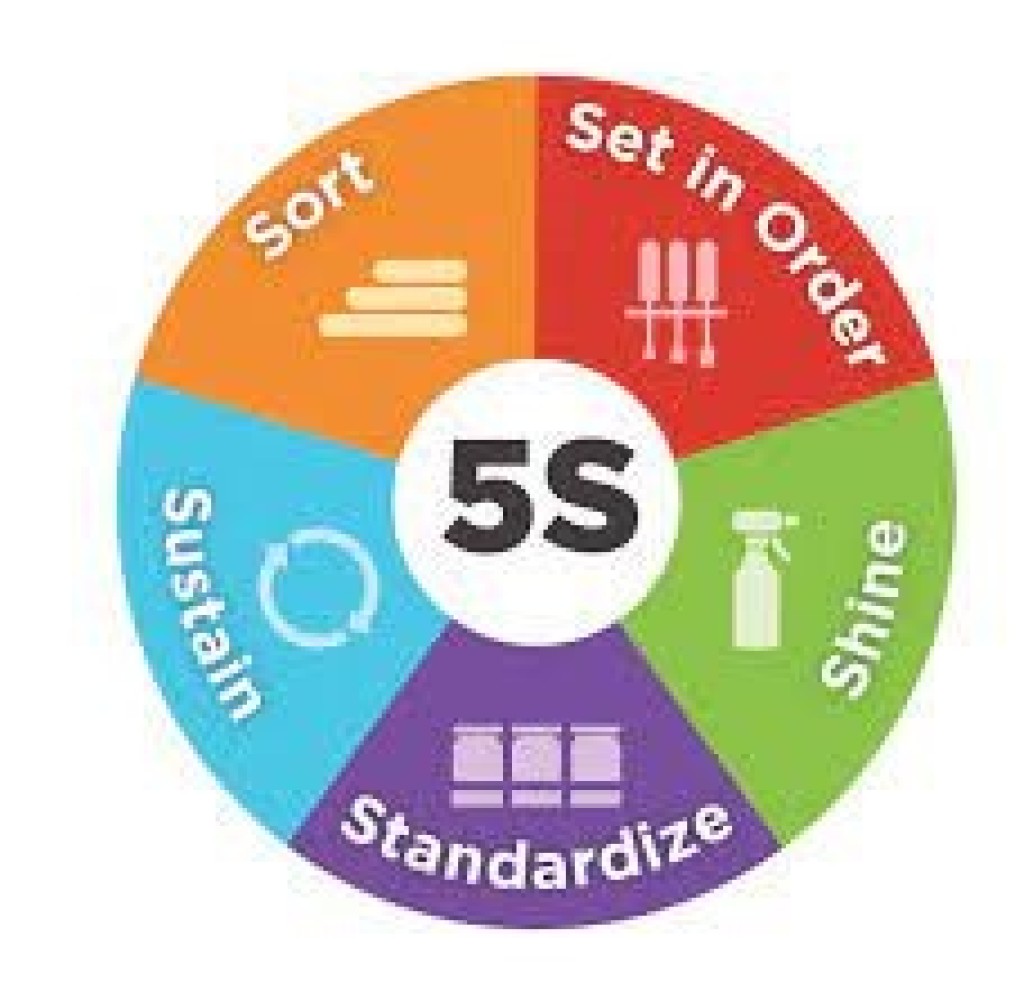September 2023 Issue
Business Plus+ Newsletter
Index
Systems to Assist Performance in 2023/24
Shrinkage – Control is Important
Budgeting is the Key Business Process
SYSTEMS TO ASSIST PERFORMANCE IN 2023/24
There are a number of ongoing business activities that can be implemented to assist businesses of all sizes to perform better including:
 Weekly Performance Report – analysing trends, Key Performance Indicators (KPIs) and the profit or loss generated from each activity’s performance during the week (preparing individual performance reports is the best approach – not all activities incorporated in a consolidated report).
Weekly Performance Report – analysing trends, Key Performance Indicators (KPIs) and the profit or loss generated from each activity’s performance during the week (preparing individual performance reports is the best approach – not all activities incorporated in a consolidated report).- Monthly Financial Accounts – prepared for each individual business unit giving management critical information on the activities within an individual business unit, which are easily identified if they are not included in a consolidated summary.
The monthly financial accounts would include KPIs and a comparison to Budget so that a complete picture of what has happened within an individual business unit for a month is available.
The prompt access of this type of financial report gives senior management access to real information that can assist in the day to day management of the business.
- Monthly Business Review Meeting – this is an opportunity for the Leadership Team to meet with their Accountant responsible for their work, to enable a detailed review of actual performance, including discussions on items that are at variance to the assumptions that were made in the Budgets. In this way, a review can be made of variances to see whether remedial action should be taken to prevent similar variations occurring in the future.
- 12 x Monthly Evaluations of Financial Performance – this is important to ensure the financial viability of the business. In the current difficult business conditions, we recommend that your financial accounts are prepared and evaluated in this manner.
If you would like to have a discussion about the implementation of a “52 Week of the Year Financial Management System” for your business, please give us a call on 1800 232 088 or send an email to or visit our website www.towersbusiness.com.au.
WHAT DOES IT MEAN?
Capitalisation Rate
When a business is being valued it is necessary to calculate the “future maintainable profit” which is then expressed at a “capitalisation rate”.
The capitalisation rate is the rate of return that a prudent arm’s-length investor would require from an investment in this type of business after the allowance of reasonable management salaries, rent and some other expenses that might not have been incurred by the current operator (possibly because they own the premises).
The capitalisation rate normally reflects a mark-up on prevailing interest rates to reflect the risk of the business, lack of negotiability of shares (because the business is not listed on a stock exchange), economic conditions, restrictions on entry into this type of business, size of the share parcel (if a company) and general business risks.
 Future Maintainable Profits
Future Maintainable Profits
When a business is valued it is normal to calculate its “future maintainable profit”.
The future maintainable profit is the expected profitability of the business after having regard to previous year’s trading and after adjustment has been made for unusual or non-recurring items.
Reasonable management salaries are included in the calculations as well as “rent” if the business is operating from premises that are owned by the business or associates of the business and no rent was previously being paid.
Comparative Analysis
A comparative analysis allows you to review your performance during each benchmark period. This is very useful management information that could be calculated daily, weekly or monthly.
It is the movement between the various benchmark calculations that is important for management to understand – particularly what caused the variation and implement prompt remedial action if needed.
BUSINESS ENTITIES
This is a continuation of the overview of various types of business entities that could be applicable to a SME business.
Large Proprietary Company
A proprietary company is defined as “large” for a financial year if it satisfies at least two of the following statements:
- The consolidated revenue for the financial year of the company and any entities it controls is $50 million or more.
- The value of the consolidated gross assets at the end of the financial year of the company and any entities it controls is $25 million or more.
- The company and any entities it controls have 100 or more employees at the end of the financial year.
The Directors of a Large Proprietary Company must prepare and lodge a financial report and a Director’s Report for each financial year with Australian Securities & Investments Commission (ASIC).
The Financial Accounts must be audited unless ASIC has granted release from the requirement to have an audit prepared.
If you have any questions on any aspect of Directors’ responsibilities relative to your company, and you would like to have a chat with Peter Towers – an experienced Director, Chief Financial Officer, Company Secretary – give us a call on 1800 232 088 to organise a suitable time for a complimentary zoom meeting. You can also visit our website – www.towersbusiness.com.au – to find out more.
ARE YOU BUYING A BUSINESS?
If you are contemplating buying a business, there are numerous matters to be considered.
Some items you need to receive from the vendor include:
- Copies of Financial Accounts for the last three years.
- Schedule of sales, on a monthly basis, for the last three years.
- Reasons for any large credit notes processed after 30 June in any year.
- Trading terms for the business – will these terms be suitable for you? Remember the customers might not like change!
- Recent Debtors Aged Analysis – check what the Debtors’ Days Outstanding are – you need to consider the traditional level of debtors in your cash flow planning.
- Customers list.
- Suppliers list.
- Methodology for the valuation of stock.
- A copy of the business’ Lease Agreement – check:
- option period;
- reinstatement conditions to the premises (painting, new carpets etc.);
- business uses permitted;
- can the lease be assigned?
 If you are taking over employees, obtain a schedule of employees’ entitlements. A new owner may decide not to recognise the period of service performed by employees to their previous employer, when calculating their length of service to determine dismissal entitlements. However, the new employer must inform employees of this in writing before the new period of service commences, otherwise their previous service must still be included in any calculation (Fair Work Australia).
If you are taking over employees, obtain a schedule of employees’ entitlements. A new owner may decide not to recognise the period of service performed by employees to their previous employer, when calculating their length of service to determine dismissal entitlements. However, the new employer must inform employees of this in writing before the new period of service commences, otherwise their previous service must still be included in any calculation (Fair Work Australia).
Is there a “Business Systems Manual” for the business? Is it current?
Details of Patents, Trademarks, Trade Secrets and Intellectual Property Systems being utilised within the business. Are you proposing to purchase these assets?
If you are not proposing to purchase Patents, Trademarks, Trade Secrets and Intellectual Property Systems currently being utilised within the business, are you going to be able to successfully generate the sales revenue that your Budget estimate specifies?
There are some other issues relative to buying a business that you should be aware of:
- Never sign a Contract until you have received legal and accounting advice.
- Make sure you are buying the business in the appropriate entity – please discuss this with us before signing any agreement.
- Keep full records of everything that is said or given to you by the vendors or the vendor’s representative.
- Do your own due diligence and check all the information supplied to you.
- Is the location satisfactory for your business?
- Have you received an indication that the current suppliers to the business are happy to supply you if you acquire the business and are you happy with the terms and conditions?
The purchase of a business is a major decision. We urge you to contact us or your accountant for an overview of your proposed purchase prior to signing any documentation.
SHRINKAGE – CONTROL IS IMPORTANT
Shrinkage occurs primarily in retail/wholesale businesses but can also apply to trades and manufacturing businesses.
Shrinkage occurs when the business fails to sell an item at its full price. The difference between a potential selling price of a product and the actual selling price is “shrinkage”.
Shrinkage can be caused by:
 Damage
Damage- Theft by an employee
- Theft by a customer
- Errors in recording product details
- Not adequately checking goods when they are received in the business
- Poor handling techniques leading to damage in stock
- Leaving perishable products out of refrigeration
- Over ordering a product, thus, having product that needs to be discounted to sell it
- Stock going out of date (this can be caused by poor stock rotation)
- Paying too much for the purchase of the stock relative to the selling price that the business has set
If you would like us to conduct a review of your stock procedures relating to the control of shrinkage in your business please do not hesitate to contact us.
Reducing Wastage
 The “5S” system (a structured, systematic approach to housekeeping and a cornerstone of any world-class manufacturing system) can assist a wide range of businesses not just manufacturing to reduce waste.
The “5S” system (a structured, systematic approach to housekeeping and a cornerstone of any world-class manufacturing system) can assist a wide range of businesses not just manufacturing to reduce waste.
“5S” involves creating an organised workplace, incorporating the following:
- SORT – sorting and removing unnecessary items
- SET IN ORDER – a place for everything and everything in its place
- SHINE – cleaning the work area
- STANDARDS – establishing the rules and standards for the business
- SUSTAIN – maintaining the standards in a disciplined way
The “5 S” system can assist businesses to improve efficiency, which should then flow through to bottom-line profitability.
If you would like to understand more about the “5 S” system and how it might apply to your business, please telephone Peter Towers on 1800 232 088 to arrange a complimentary zoom meeting, or send us an email: .
BUDGETING IS THE KEY BUSINESS PROCESS
It is very important for business operators to have some detailed guidelines to assist in navigating future challenges.
The key document is the Budget for the next twelve months or even longer periods.
The Budget should be prepared jointly with the Leadership Team so that the likely end result of various decisions being made can be calculated, analysed and discussed as to whether any operational changes should be made.
The past has occurred – it is too late to make changes but the future can be heavily influenced by informed decisions being made now.
What is included in the Budget Process?
It starts with the Business Plan or Strategic Review that we can assist the Leadership Team to undertake. The plan has enabled the vision to be clearly defined. The Predictive Accounting Reports which includes budgets illustrates the vision shown in the Business Plan or Strategic Review in “financial terms”.
We recommend that a Budget is prepared for each business activity, not treating individual business activities in a consolidated format. In our experience it is easier to analyse individual operations if that activity is been separately analysed and not incorporated in a consolidated report. This approach assists the person who is responsible for the performance of that individual activity to have an in-depth understanding of everything that relates to the performance of that activity.
 In the Budgeting Process we utilise “Key Drivers” which are subaccounts for key information on which budget decisions are made including items such as:
In the Budgeting Process we utilise “Key Drivers” which are subaccounts for key information on which budget decisions are made including items such as:
- Materials Inventory
- Completed Stock
- Debtors
- Creditors
- Research and Development Activities
- Capital Expenditure
The Cash Flow Forecasts include postings from the individual Budgets as well as from the Key Drivers and highlights the cash flow implications of decisions well in advance so that if necessary you can amend decisions relating to future activities.
The Projected Balance Sheet gives a “snapshot” of what the business’ financial position will be at a future date. This document conveys to the leadership team the financial end result of the strategies outlined in the plans if they are implemented.
It is never too late to start the budgetary process in a business. If you would like to have a discussion with us relative to the preparation of Predictive Accounting Reports including Budgets for your business please do not hesitate to contact the accountant in our firm who attends to your work.











